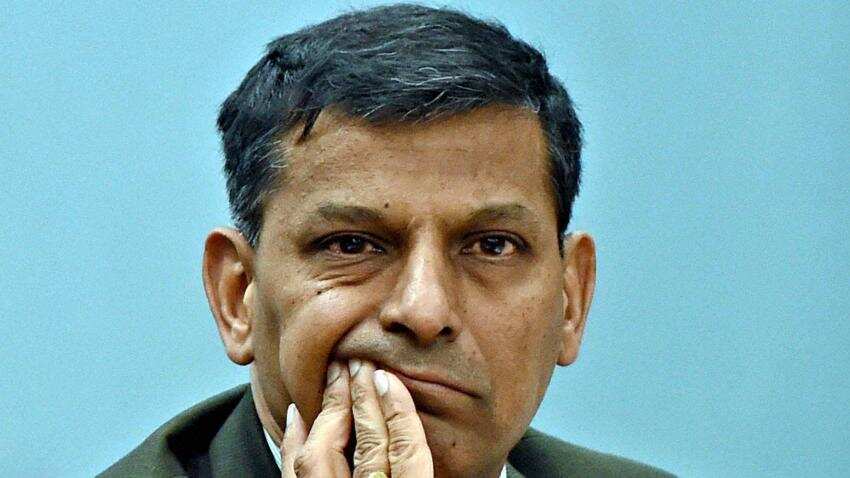Corporate debt continues to be a cause of concern

Debt is coming down but remains a cause of concern for India Inc.
In its financial stability report, RBI said that the stress in the corporate sector has lowered in 2015-16 and there has been a general improvement in profitability, however, debt levels, even though now lower, remain on the higher side.
Leveraged companies are defined as those either with negative net worth or debt to equity ratio of at least 2.0.
The central bank in its recent report noted that the proportion of 'leveraged' companies undertaken as samples for analysis has declined sharply from 19% in March 2015 to 14% in March 2016.
Moreover, their share of debt to total debt has also declined to 20.6% in March 2016 as against 33.8% in the year-ago period.
Sonal Verma and Neha Saraf of Nomura Securities, in a report dated July 1 said that companies are now actively selling their non-core assets to bring down their debt levels.
This is visible from activities undertaken by highly leveraged companies like Tata Steel, Suzlon, JayPee Group, etc.
"To an extent, this could also be driven by strategic debt restructuring, in which banks convert part of their loan into equity, or by banks partially writing down the debt after selling stressed assets to asset reconstruction companies," the duo said.
The RBI's report also analysed current trends in debt servicing capacity and leverage of 'weak' companies using same samples for the period from 2015 to 2016. The 'weak' companies are defined as those having interest coverage ratio of less than one.
As per its analysis, around 15% of companies were 'weak' in the select sample at the end of March 2016 as against 17.8% in March 2015.
In addition, the share of debt of these 'weak' companies also fell to 27.8% of total debt in the second half of FY 2015-16 from 29.2% in the second half of FY 2014-15. However, the debt-to-equity ratio of these ' weak' companies increased to 2.0 from 1.8 during the same period.
According to the report, a risk profile of select industries as at the end of March 2016 showed that iron and steel industry had high leverage as well as interest burden while construction, power, telecommunication and transport industries also had relatively high leverage.
"Even though deleveraging continues, the pace of improvement will likely to be slow, because some of the most leveraged sectors that also account for a large share of overall debt include metals, construction, telecom, textiles and power. These sectors still face weak demand, long gestation lags or policy hurdles," cited the two analysts from Nomura Securities.
The central bank said that the overall risks to the corporate sector, which increased after the global financial crisis during 2007-08, have shown some moderation in 2015-16. However, the risks due to lower demand and liquidity pressure remains, it added.
Get Latest Business News, Stock Market Updates and Videos; Check your tax outgo through Income Tax Calculator and save money through our Personal Finance coverage. Check Business Breaking News Live on Zee Business Twitter and Facebook. Subscribe on YouTube.
RECOMMENDED STORIES

Power of Compounding: How long it will take to build Rs 5 crore corpus with Rs 5,000, Rs 10,000 and Rs 15,000 monthly investments?

SCSS vs FD: Which guaranteed return scheme will give you more quarterly income on Rs 20,00,000 investment?

Small SIP, Big Impact: Rs 1,111 monthly SIP for 40 years, Rs 11,111 for 20 years or Rs 22,222 for 10 years, which do you think works best?

SBI 444-day FD vs PNB 400-day FD: Here's what general and senior citizens will get in maturity on Rs 3.5 lakh and 7 lakh investments in special FDs?

Looking for short term investment ideas? Analysts suggest buying these 2 stocks for potential gain; check targets
09:24 AM IST









 RBI: After another status quo year, all eyes on a growth-propping rate cut with new Guv at helm By Ashish Agashe
RBI: After another status quo year, all eyes on a growth-propping rate cut with new Guv at helm By Ashish Agashe Electricity distribution companies continue to remain a burden on state finances: RBI
Electricity distribution companies continue to remain a burden on state finances: RBI RBI imposes penalties on IndusInd Bank and Manappuram Finance for non-compliance of certain norms
RBI imposes penalties on IndusInd Bank and Manappuram Finance for non-compliance of certain norms Forex reserves drop $2 billion to $652.86 billion
Forex reserves drop $2 billion to $652.86 billion RBI flags rising subsidies by states as incipient stress
RBI flags rising subsidies by states as incipient stress